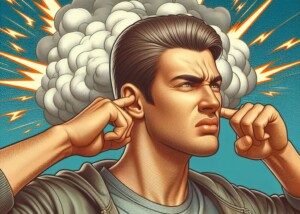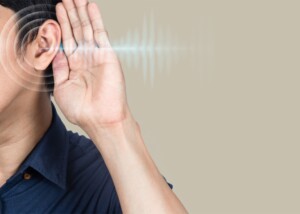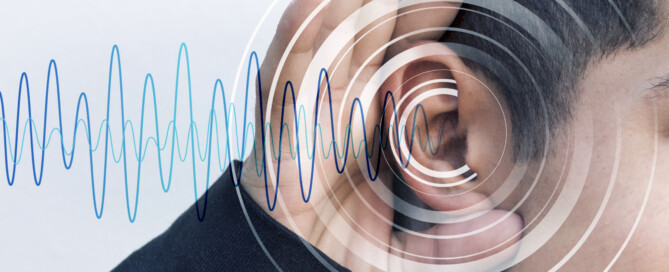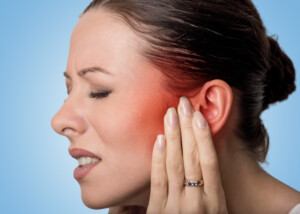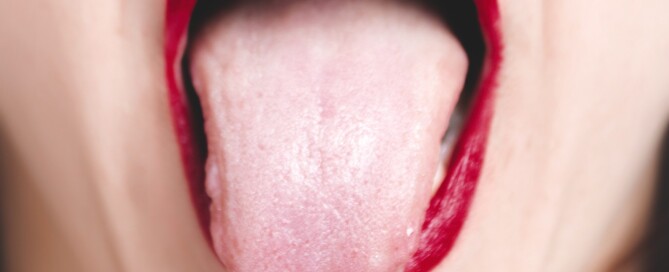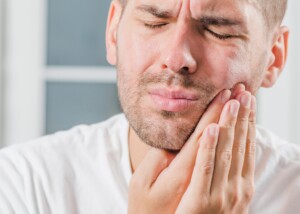Can Screaming Children Worsen Tinnitus and Hearing Loss ?

Tinnitus sufferers with children or near kids often wonder if a child’s screams and shrieks can worsen their tinnitus and even cause hearing loss.
Many people would agree that young kids are their loudest during play, rather than during a tantrum. (more…)
Why Is Tinnitus Quieter in the Morning?
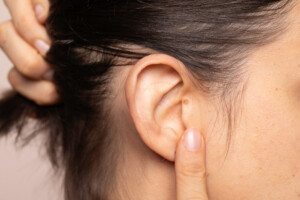
It is a well-known fact that for many tinnitus sufferers, morning brings relief because their tinnitus seems quieter during this time.
So why can’t this quieter ringing, hissing or buzzing extend further into the day as the hours go by?
For some with the common problem of tinnitus — which has a large number of causes — the sound that only they can hear can become unbearably loud.
What Is It About the Morning?
“Some individuals are not as aware of their tinnitus in the morning, and this is likely due to their relative calm state of mind,” says Rivka Strom, AuD, CCC-A, chief audiologist at Central Hearing LLC in NY.
“When we are tired or more stressed during or after a long day of work, we are often more aware and disturbed by our tinnitus.
“Stress can be a trigger for tinnitus or the change in severity of tinnitus.”
Other sufferers report that their tinnitus is actually more pronounced in the morning.
This could be due to the lack of distraction while someone lies in bed early in the morning; no distraction of kids, pets, having to shower or make breakfast, check the e-mail, etc.
Instead, one is just lying there in a quiet room. What much else can they hear BUT their tinnitus?
Another point to consider for those whose tinnitus is louder in the morning, is that as they lie in bed, they start dwelling on what the day faces.
The anticipation of the day’s tasks may bring on anxiety and feelings of bleakness, which can aggravate the tinnitus. The exact science behind how this occurs is not known.
So it goes both ways: Some people have a quieter tinnitus in the morning, and for others, it’s louder or more noticeable.

Dr. Strom is a member of the American Speech Language and Hearing Association and has received several awards including Brooklyn College’s Excellence In Audiology Award.
 Lorra Garrick has been covering medical, fitness and cybersecurity topics for many years, having written thousands of articles for print magazines and websites, including as a ghostwriter. She’s also a former ACE-certified personal trainer.
Lorra Garrick has been covering medical, fitness and cybersecurity topics for many years, having written thousands of articles for print magazines and websites, including as a ghostwriter. She’s also a former ACE-certified personal trainer.
.
Top image: Shutterstock/sruilk
Source:
Baigi, A., et al., “Tinnitus in the general population with a focus on noise and stress: a public health study.” Ear Hear. 2011 Nov-Dec;32(6):787-9.
What Can Cause Tinnitus to Come and Go ?
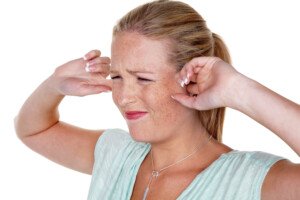
Are you puzzled over why your tinnitus seems to just come and go without any rhyme or reason?
Or is it just your imagination that the “ringing” in your ears is intermittent? (more…)
How to Tell if Tinnitus Is in Both Ears or One
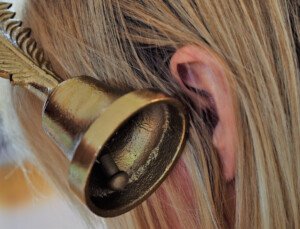
If you know that a brain tumor can cause tinnitus in only one ear, you’ll want to be able to tell if your tinnitus is in one ear or both.
You may want to know this even if you’re not all that worried about a serious cause. (more…)
How Does Earwax Buildup Cause Tinnitus & How Does It Sound?
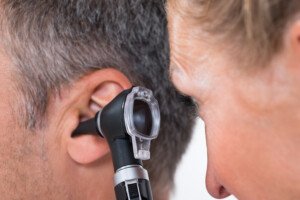
If you’ve been googling causes of tinnitus, you’ve probably come across ear wax buildup as a potential cause of this annoying condition.
“Ears typically are self-cleaning, but some people produce excess wax and need to use softening agents or have the wax (cerumen) professionally cleaned,” says Rivka Strom, AuD, CCC-A, chief audiologist at Central Hearing LLC in NY.
“According to the American Academy of Otolaryngology-Head and Neck Surgery, excessive ear wax, especially if the wax touches the ear drum, can cause pressure and change how the ear drum vibrates, which can result in tinnitus,” explains Strom.
“It is also thought that if there is even a slight decrease in auditory input (such as that caused by excessive ear wax), it can evoke tinnitus or enhance an already present tinnitus.
“A classic study performed in 1953 by Drs. Heller and Bergman revealed the high prevalence of tinnitus when individuals are placed in a very quiet environment for several minutes.
“Hearing loss of any type can reduce auditory input and promote tinnitus, but it is especially common for those with cerumen impaction.
“As indicated earlier, this could also be resulting from pressure changes at the eardrum due to impacted cerumen.”
The tinnitus can have a variety of sounds such as a high pitched steady tone, a hissing or buzzing, crackling, tinkling or chirping.
What about tinnitus in just one ear — unilateral tinnitus?
People who experience sudden-onset unilateral tinnitus may start fearing that this one-sided nature means something serious like a brain tumor or entanglement of blood vessels.
Yes, tinnitus on only one side can be a brain tumor, but it is more likely to have a benign cause such as ear was buildup.
An audiologist can remove the excess cerumen.
I’ve had this done, and it felt good to know that a clump of wax had just been removed from deep inside my ears. A Q-tip swab could NOT have gotten it out.
The removal should be done annually or sooner if necessesary by a professional, whether you have tinnitus or not.

Dr. Strom is a member of the American Speech Language and Hearing Association and has received several awards including Brooklyn College’s Excellence In Audiology Award.
 Lorra Garrick has been covering medical, fitness and cybersecurity topics for many years, having written thousands of articles for print magazines and websites, including as a ghostwriter. She’s also a former ACE-certified personal trainer.
Lorra Garrick has been covering medical, fitness and cybersecurity topics for many years, having written thousands of articles for print magazines and websites, including as a ghostwriter. She’s also a former ACE-certified personal trainer.
.
Top image: Shutterstock/Andrey_Popov
Causes of Tinnitus when Chewing Food or Gum
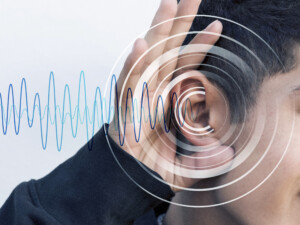
Do you find that sometimes when you’re chewing food or gum, you get tinnitus or a “ringing” in your ear?
There are several reasons why chewing can bring out a noise that seems to be coming from inside your ears.
Tinnitus is defined as a subjective experience of hearing a sound that seems to be originating from inside the ear.
Usually it’s heard in both ears at the same time. The sound can vary, but a common presentation is that of a steady, very high but faint tone, or a hissing sound.
Others may hear chirping, tinkling or thumping.
“Tinnitus can be experienced by some individuals when chewing for the following reasons,” says Rivka Strom, AuD, CCC-A, chief audiologist at Central Hearing LLC in NY.
“The chewing muscles are near the muscles that connect to the middle ear and may have an effect on tinnitus,” continues Strom. (more…)
Can People Born Deaf Hear Their Own Tinnitus?

Can a deaf person actually experience tinnitus or the subjective sound of a humming, hissing or other tone in an ear?
Tinnitus is known as “ringing in the ears.”
But the so-called ringing can present in any one of numerous ways.
It can resemble the sound of frying bacon, chirping crickets, tinkling, whooshing or fluttering.
The noise seems to come from inside one’s ear, and usually, both ears are affected at the same time.
“Individuals who are deaf can hear tinnitus, as tinnitus is actually phantom sounds generated by the brain due to damaged hearing sensory cells and neurons,” explains Rivka Strom, AuD, CCC-A, chief audiologist at Central Hearing LLC in NY.
It’s intriguing that despite congenital deafness, it is indeed possible for a person to hear the so-called ringing in their ears.
The subjective hissing, buzzing or high pitch tone may develop when the patient is old enough to realize one day that they are experiencing something that’s never been there before.
“Studies of MRI scans on individuals with tinnitus indicate an excess firing of neurons in the brain’s auditory cortex,” continues Strom.
“Since tinnitus is believed to be generated by the brain and not the ear, those who are deaf may perceive tinnitus.”
(This excludes objective tinnitus — in which an examiner as well can hear the sound — which typically involves vascular problems such as an entanglement of blood vessels.)
We actually “hear” with our brain.
What really happens is that sound waves from the environment enter the ear and are converted to electrochemical impulses by nerve cells in the ear’s cochlea.
The cochlea is a spiral shaped structure that has many nerve cells that receive sound waves from the environment.
These nerve cells transmit the impulses to the hearing center of the brain, where they are decoded and interpreted as the various sounds we hear in the environment.
This entire process takes place in milliseconds.
So in the case of a person who was born completely deaf and has always been unable to hear sounds in the external environment, you can now understand how that individual would hear subjective tinnitus if the electrical activity is originating in the brain’s auditory cortex.

Dr. Strom is a member of the American Speech Language and Hearing Association and has received several awards including Brooklyn College’s Excellence In Audiology Award.
 Lorra Garrick has been covering medical, fitness and cybersecurity topics for many years, having written thousands of articles for print magazines and websites, including as a ghostwriter. She’s also a former ACE-certified personal trainer.
Lorra Garrick has been covering medical, fitness and cybersecurity topics for many years, having written thousands of articles for print magazines and websites, including as a ghostwriter. She’s also a former ACE-certified personal trainer.
.
Top image: ©Lorra Garrick
What Kind of Head Pain Can TMJ Disorder Cause?

You probably already know that TMJ disorder can cause headaches.
But what kind of headaches can temporomandibular joint disorder bring on? (more…)
All the Kinds of Tongue Problems TMJ Disorder Causes
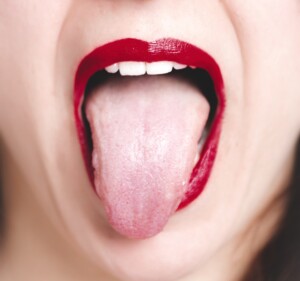
TMJ problems affect the tongue, though more serious conditions can also cause symptoms involving the tongue such as cancer or a neurological disease (more…)
Can You Get TMJ Disorder from Biting on Hard Chocolate?

Just how possible is it to get TMJ disorder from biting on hard chocolate?
Chocolate blocks can be quite hard if refrigerated.
It’s possible that if you bite down on very hard chocolate multiple times in a single sitting, that you’ll end up with a little soreness in the jaw and maybe a temporary vague clicking sound and feeling when you move the jaw. (more…)

